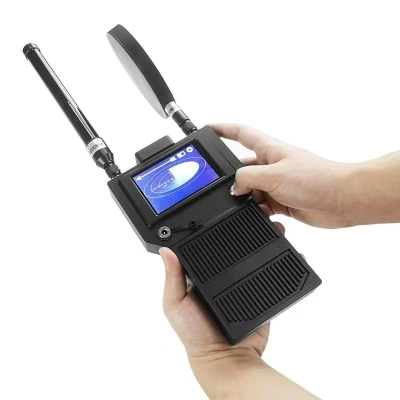Cell phone disruptors are used in a wide range of scenarios, from exam venues and conference rooms to prisons and confidential facilities. So, what is the operating frequency range of a cell phone jammer? This article will introduce the operating frequency range of a cell phone signal jammer and its related principles in detail.

Cell phone disruptors interfere with the communication between a cell phone and a base station by emitting strong electromagnetic waves at the same or similar frequency as the cell phone communication. This process is similar to suddenly playing loud music in a quiet room, making it impossible for people to communicate normally. Cell phone communications mainly rely on radio frequencies, which are usually divided into multiple frequency bands, and different frequency bands are used for different types of communications. For example, communication standards such as GSM, CDMA, 3G, 4G, and 5G all use different frequency bands.
Frequency ranges of various communication standards
GSM frequency band
GSM (Global System for Mobile Communications) is an early mobile communication standard that is widely used around the world. GSM usually uses the following frequency bands:
900 MHz and 1800 MHz
CDMA frequency band
CDMA (Code Division Multiple Access) is another mobile communication standard that is mainly used in North America and some Asian countries. Common CDMA frequency bands include:
850 MHz and 1900 MHz
3G frequency band
3G technology introduces higher data transmission rates. Common 3G standards include UMTS (WCDMA) and CDMA2000. The frequency bands used by 3G include:
850 MHz, 900 MHz, 1900 MHz, 2100 MHz
4G frequency band
4G LTE (Long Term Evolution) provides faster network speeds and higher network capacity. The main frequency bands of 4G are:
700 MHz, 800 MHz, 1700/2100 MHz, 1800 MHz, 1900 MHz, 2600 MHz
5G frequency band
5G is the latest generation of mobile communication technology, and the frequency bands used are more complex, including low-frequency bands, medium-frequency bands and high-frequency bands (millimeter wave bands):
600 MHz, 700 MHz, 3.5 GHz, 26 GHz, 28 GHz

Working frequency range of mobile phone signal jammers
In order to effectively block mobile phone signals, mobile phone signal jammers are usually designed to cover these common communication frequency bands. Specifically, the operating frequency range of modern mobile phone signal jammers generally includes:
850 MHz, 900 MHz, 1800 MHz, 1900 MHz, 2100 MHz, 2400 MHz (commonly used for Wi-Fi and Bluetooth), 2600 MHz, 3500 MHz (partially used for 5G), 5800 MHz (commonly used for Wi-Fi and Bluetooth)
With the continuous development of communication technology, future mobile phone signal jammers will need to adapt to a wider frequency range, including new 5G frequency bands and new communication standards that may appear in the future. In addition, intelligent shielding technology will also become a trend, which can dynamically adjust the shielding range and intensity according to specific needs to improve efficiency and reduce unnecessary interference. The operating frequency range of mobile phone signal jammers is wide, including multiple frequency bands from 850 MHz to 5800 MHz to cover the current major mobile communication standards (GSM, CDMA, 3G, 4G, 5G) as well as Wi-Fi and Bluetooth. With the development of technology, future mobile phone signal jammers will be more intelligent and flexible to adapt to the ever-changing communication environment.



